Eagle Guide
by Martin Willey
The passenger module of the Eagle is used for carrying passengers and materials, and for more serious computing analysis than is possible with the flight computers in the cockpit. The crew enter and exit through the passenger module side doors. The forward part of the module has shelves and alcoves, and the seating in the rear section may also be replaced for storage. There are either 8 or 4 seats, depending on whether some are removed for storage, or the starboard side is replaced by a large computer wall.
For the first 6 episodes, the front door of the passenger module had the numbers 5 (outer) and 4 (inner) and the rear door is number 3 (the door to the Command Module was numbered 6). If the numbering is door numbers, perhaps the side doors are 1 and 2. From Missing Link onwards, the Eagle number appears on the door. In Year 2, an additional "Eagle" label is added for clarity.
Although the pods have four vertical rocket motors and extendible legs underneath, the interior has almost no underfloor space to accommodate this.
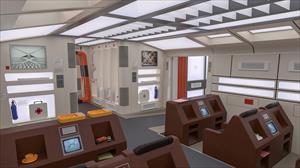
The passenger module as seen in Breakaway, with seats both sides. Image by Andrew Novinc. See 360° panoramas here.
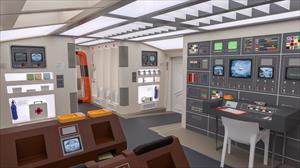
The passenger module in the later configuration (from Death's Other Dominion onwards). Four seats remain on the port-side, with a computer wall and desk on the starboard side (the wall appears without seats in Missing Link and The Last Sunset). The front screens are replaced with CRTs. The starboard seats reappeared at times, and minor details changed through the series.
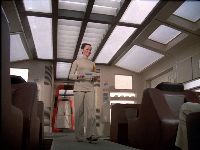
The early scene in Breakaway is obviously inspired by the space clipper interior from 2001: A Space Odyssey. On the ceiling, the smaller side lights are inset and roughly correspond to the external black panels on the sloping top of the pod.
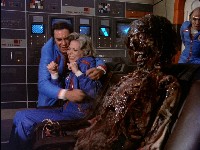
Many memorable scenes occur in the passenger module- including the corpse from Death's Other Dominion
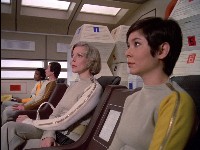
The passenger module is the location for quieter emotionally dramatic scenes, such as this between Helena and Sandra in Black Sun
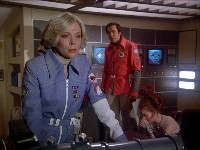
Another scene of emotional drama in the passenger module is the ending of The Metamorph
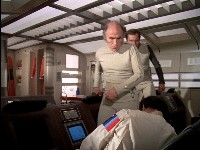
Stowaways regularly appear in the passenger module: Lee Russell in Matter Of Life And Death, the caveman in The Full Circle, the dwarf in Mission Of The Darians
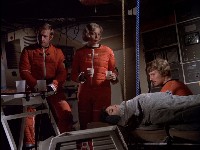
The passenger module is the scene of a large portion of The Last Sunset
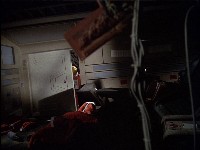
Another wrecked passenger module, seen briefly in Another Time, Another Place
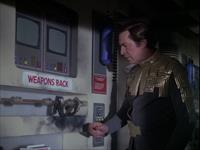
Another wrecked module, Devil's Planet, and again in The Immunity Syndrome
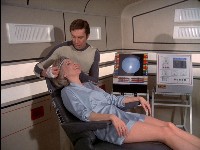
Alternative configurations also appear, in Guardian Of Piri and All That Glisters
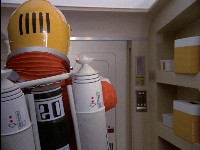
The EVA in Space Brain. There is no airlock so the entire module must be depressurised. Fortunately boxes by the door do not float away.
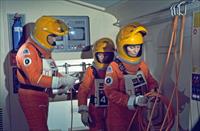
Another EVA in The Exiles, this time with ropes.
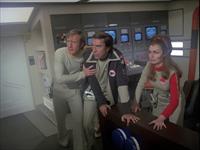
Much of The A B Chrysalis takes place in the passenger module.
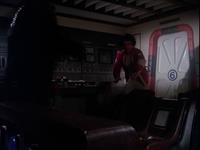
A rare fight scene in the passenger module, in The Beta Cloud
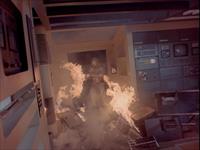
There are more moments of action in the start of The Bringers Of Wonder part 1
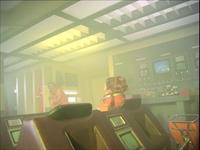
The lights of the passenger module can be turned on bright; Maya uses the bright light as a plant performing photosynthesis in The Seance Spectre
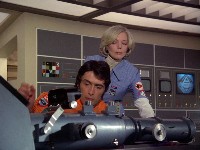
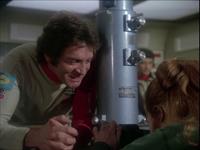
In The Metamorph and All That Glisters we see this tall microscope inside the passenger module, which is normally seen in Command Center.
Copyright Martin Willey. Thanks to Marcus Lindroos.